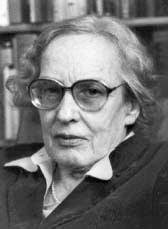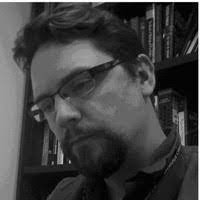Session 7: The Jungian Theory and Therapy versus RGFT
Hello, this time we will discuss what is between the Jungian treatment and RGFT.
An archetype is a prototype of an idea, an object that stays at the bottom of human memory, as a kind of model or template for images originating from the very early stages of human kind.

Carl Jung
In his book “Man and His Symbols”, psychiatrist Carl Jung explains that archetypes "are the pieces of life themselves – images that are integrally connected to the person living by the bridge of emotions." While we tend to think of our consciousness in a uniform sense of self (or of me), a careful examination of consciousness may show that instead of consciousness being perceived as a unit, it may be a pantheon of archetypal figures existing in our minds.
“Archetypes,” writes psychologist Marie-Louise von Franz in her “Archetypal Dimensions of the Psyche”, are “hereditary tendencies that cause us to respond typically to basic, internal, or external human problems”.
“Archetypes”, she claims, “affect everything a person thinks, feels and does. Therefore, when dealing with archetypes, think of fixed patterns of behavior common to all of humanity”.

Marie-Louise von Franz
Among the common archetypes can be found those of the ‘hero, warrior, teacher, mother, child’, and more. The archetypes appear in a variety of forms, including figures in mythology, art in religion in stories, symbols, and rituals and various myths.
Psychologist Carl Gustav Jung (early 20th century) saw the archetype as a human mental pattern that manifested itself in broad areas.
According to Jung's analytical theory, there are a number of key archetypes:
‘Ego’ – the archetype of adaptation to reality and the source of identity.
The ‘shadow’ – the inferior and undesirable side of our personality, which we are not willing to admit exists. The "dark part", which inhabits the primitive passions and emotions that exist in us.
The ‘persona’ – the mask we wear in accordance with the requirements of the environment and society. The social personality, which hides the "true self" -.
‘Anima’ – the feminine element found in men.
The ‘animus’ – the masculine element in women.
The ‘self’- which gives the personality uniformity, balance and stability.
Other archetypes are:
Ego – the archetype of adaptation to reality and the source of identity.
The shadow – the inferior and undesirable side of our personality, which we are not willing to admit exists. The "dark part", which inhabits the primitive passions and emotions that exist in us.
The persona – the mask we wear in accordance with the requirements of the environment and society. The social personality, which hides the "true self" -.
Anime – the feminine element found in men.
The animus – the masculine element in women ,.
The self – which gives the personality uniformity, balance and stability.
Other archetypes are: ‘mother figure, child, God, mother earth, hero, old man, sage, monk, manipulator, caregiver, king, queen, mentor, prostitute, tyrant’ and more.
Here are two comments in the context of Jungian theory
A] According to Eric Goodwyn, since Jung assumed that the archetype was an a priori structure, previously formed structures within the psyche, he was constantly accused of "marcionism". Recently, with the advent of genetic research and the human genome project, the idea that psychological structures can be innate has come under even more harsh criticism in Jungian thought. There seems to be a growing consensus today that Jung's idea of innate psychological structures was wrong, and that perhaps the archetype as such should be abandoned in favor of more developmental theories of the mind.

Erik Goodwyn
Erik Goodwyn. Approaching archetypes: reconsidering innateness. 2010 Sep;55(4):502-2. J Anal Psychol.
B] The concept of Dialogical Self [DS] was added in the 1990s by some authors to the body of Jungian theory.
An exhaustive definition of this was given by Hubert Hermans and his colleagues who defined the "dialogical self" as a dynamic multiplicity of stated positions of an expanded internal discourse of the psyche that includes topical figures in the social world and even imaginary figures closely related to topical figures "
Hubert Hermans' theory of the "dialogical self" sees the self not as one entity, but as "a society of consciousness" composed of "many selves" or in other words of many self-figures. He calls these self-positions I-positions, (the letter I in English from the word "I") that are in constant dialogue. Where each single position of “I” contributes to the way it sees and feels itself and the world.
Hermans used the metaphore of a stage and actors to describe the interactions of I-positions in the "dialogical self." Sometimes in certain circumstances there may represent a confrontation within the "dialogical self" of a person when the I and I-positions criticize and fight each other, these positions may be in some cases of other people – sharing their true or imagined opinions to create negative dialogues that may provoke feelings of doubt and anxiety.
This concept allows for an extension of Jungian treatment not only to archetypes but also to real actual figures and their imaginary aspects where it can happen that sometimes the imaginary figures are derivatives of the archetypal figures and usually the real figures are at the forefront compared to the imaginary figures and their possible archetypal connection.

Hubert Hermans
So what are the differences then between the archetypal figures in psychic life in Jungian therapy compared to RGFT?
Contrary to Jung's conception of archetypes which are regarded as constant representations from generation to generation and identical in all human beings. In RGFT the perception is related to the individual historical past (of just decades) of a particular person, to that person’s internalized figures which are usually related to that past, and to its unique development. On the other hand, RGFT adapts a certain evolutionary conception which relates to the development of different kinds of "self" with similar aspects in all human beings.
Contrary to Jung's conception of archetypes, regardless of the time of their formation or the circumstances that led to their formation, in the RGFT, the different types of dominant "self" originated in the prehistoric period when each of these selves stems from different roles in the tribal system, for example, " the tribe’s leader", "the hunter", "the shaman", "the guardian of the fire", "the plucker", etc.
RGFT refers to the period of the primitive tribal man as a source for the formation of the prototypical features of the dominant self ( that are based upon the real, necessity forced roles within the tribe) as opposed to Jungian not historically associated archetypes. RGFT conception chose the primitive communal system
as a basic referent point since it was the period when the more sophisticated socialization along with the first forerunners of language were formed.
Finally, RGFT revolves entirely around social conception.
And what are the differences between Dialogical Self and RGFT?
In Dialogical Self the central concept is one self where it is perceived in a more complex way and includes a variety of parts resulting from the interactions with the different characters, both realistic and imagined.
In contrast, in RGFT the basic perception is not of one self but of multiple selves where each self exists in its own right with its own creation and history with a number of specific characteristics such as emotional aspects, attitudes, forms of behavior and more.
See you in the next session,
Dr. Igor Salganik and Prof. Joseph Levine
 Prof. Joseph Levine, M.D. is an emeritus associate professor in the Division of Psychiatry, Faculty of Health Sciences, Ben Gurion University in Israel. Prof. Levine is a certified psychiatrist with clinical experience in controlled trials of adult psychiatric disorders and in psychotherapy. He was awarded a NRSAD independent investigator grant for the study of Creatine Monohydrate in psychiatric disorders -- mainly Schizophrenia. He resides and treats patients in Tel Aviv and all of central Israel.
Prof. Joseph Levine, M.D. is an emeritus associate professor in the Division of Psychiatry, Faculty of Health Sciences, Ben Gurion University in Israel. Prof. Levine is a certified psychiatrist with clinical experience in controlled trials of adult psychiatric disorders and in psychotherapy. He was awarded a NRSAD independent investigator grant for the study of Creatine Monohydrate in psychiatric disorders -- mainly Schizophrenia. He resides and treats patients in Tel Aviv and all of central Israel.
Leave a comment